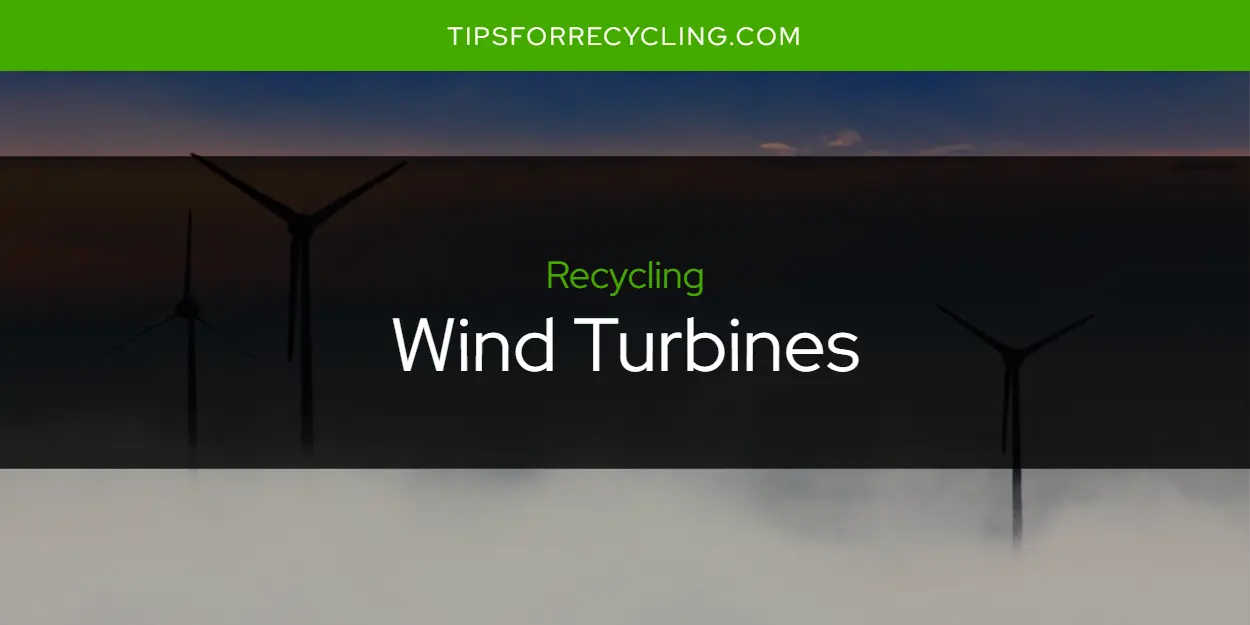Are Wind Turbines Recyclable?

Yes, wind turbines are recyclable.Virtually all of the parts that make up a wind turbine can be recycled, and some components are even easy to repurpose for other uses. The most important recyclable components of a wind turbine include aluminum, steel, copper wiring and electronic equipment. This makes the recycling process easier and more efficient than with other renewable energy sources like solar panels.
See the below map for locations where you can recycle wind turbines.
Yes, you can make money by recycling wind turbines. The cost of materials and labor to recycle a turbine will vary depending on its size and condition, but it is typically much less than buying new parts or building a new turbine from scratch. Additionally, many companies offer incentives for those who recycle old wind turbines and use the recycled materials in projects or products they manufacture.
Similarly, see if you can recycle wind turbines blades.
The primary advantage of recycling wind turbines is that it helps conserve resources. By reusing materials from old turbines instead of creating new ones, manufacturers save energy and raw materials while also reducing their carbon footprint. Additionally, recycling reduces waste sent to landfills which helps minimize environmental damage caused by improper disposal of hazardous materials like batteries and chemicals found in many large-scale industrial processes.
Similarly, see if you can recycle wind turbine blades.
One potential downside to recycling wind turbines is that it can be challenging to disassemble a turbine without causing further damage or releasing hazardous materials into the environment if not done correctly. Additionally, even though there are financial incentives for those who choose to recycle their old turbines many people may not have access to such programs in their area. Finally, it takes time for manufacturers to locate recycled materials that meet quality standards so production times may be longer than if they were using brand-new parts or pieces made from scratch.
Similarly, see if you can recycle windmills.
Recycling a wind turbine requires careful disassembly in order to preserve as much material as possible while avoiding any damage or release of harmful substances into the environment. It’s best to hire professionals who specialize in this type of work as they will know how to safely dismantle the machine without any unintended consequences. Once disassembled, each component should be sorted into appropriate categories before being sold off or reused in another product or project by the manufacturer themselves.
Similarly, see if you can recycle pictures.
The recycled materials from a decommissioned wind turbine can be used for several different purposes depending on their quality and condition when recovered from the site where the turbine was located: metals can be melted down and converted into new steel products; plastic components can be shredded into small pieces then reformed into other useful items; wiring harnesses can be salvaged for electrical projects; motors and gears could potentially find use powering machinery; glass components could be melted down for reuse in windowpanes; blades may even find life again as birdhouses!
Similarly, see if you can recycle window blinds.
In conclusion, recycling wind turbines offers several advantages including resource conservation, reduced waste sent to landfills, financial incentives for those who do it correctly as well as creative reuses for salvaged components like motors and blades – all while helping reduce our overall carbon footprint on planet Earth!